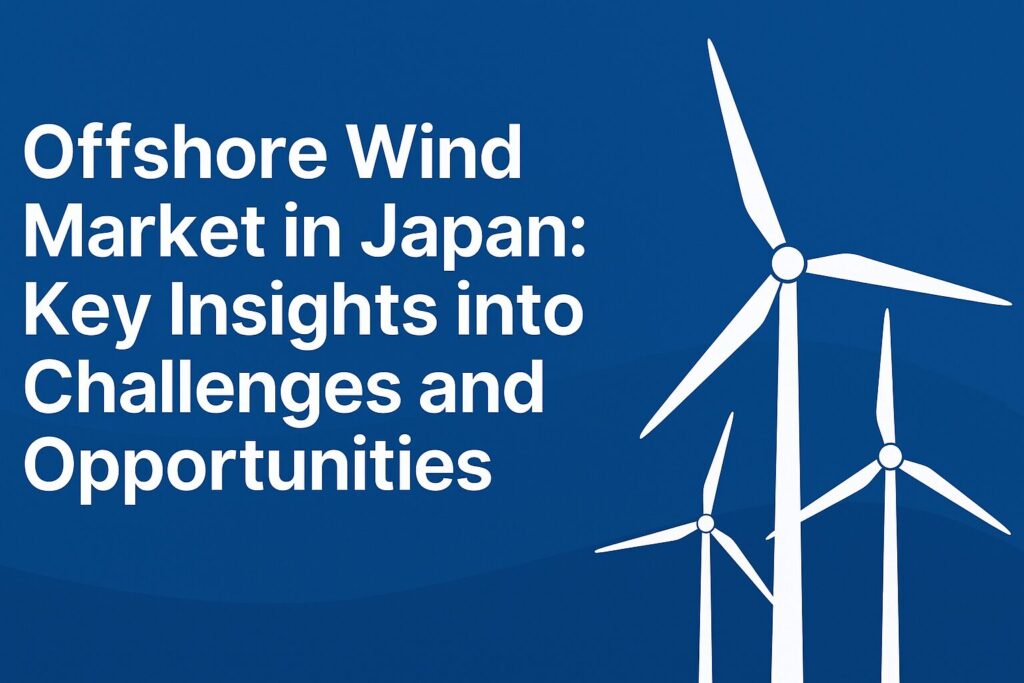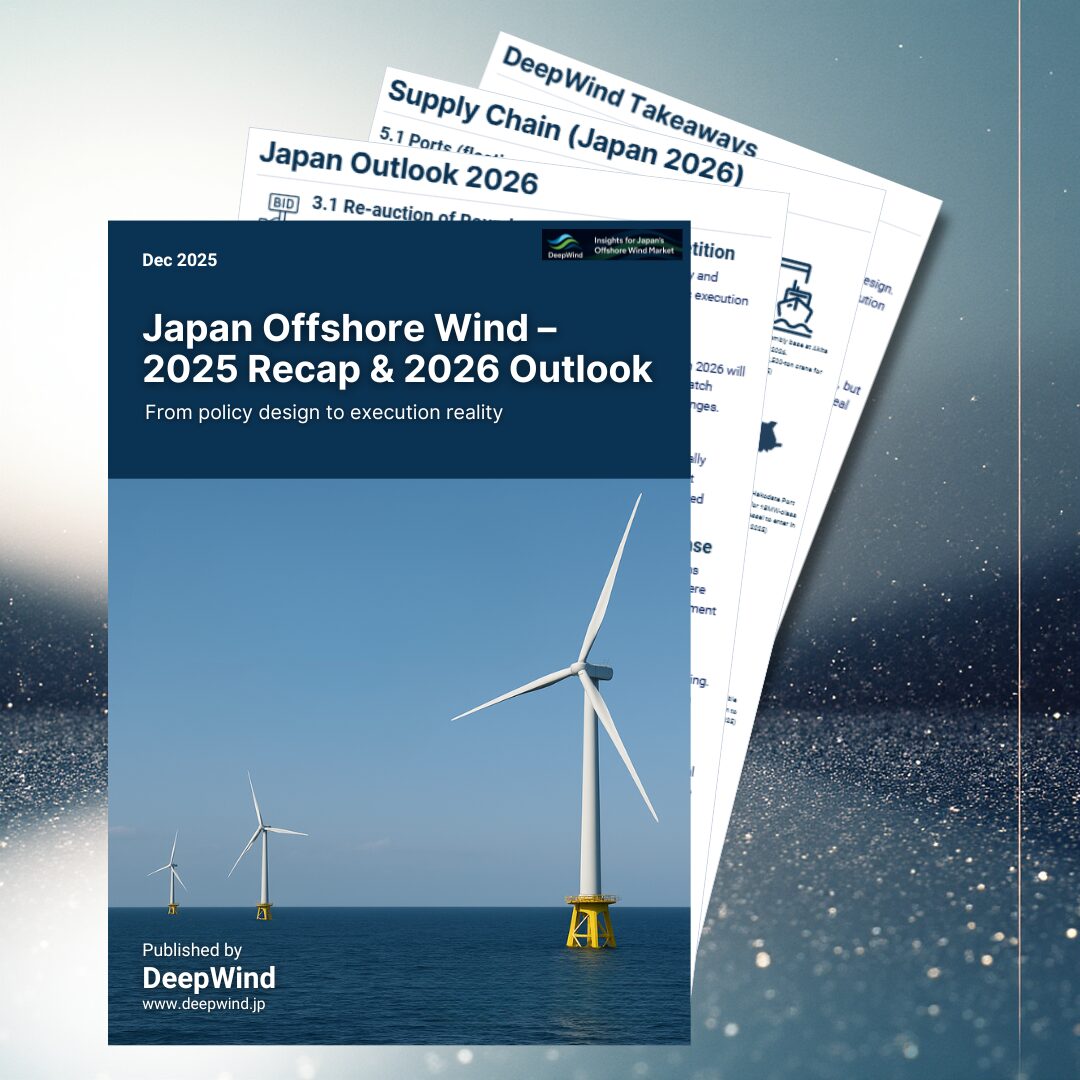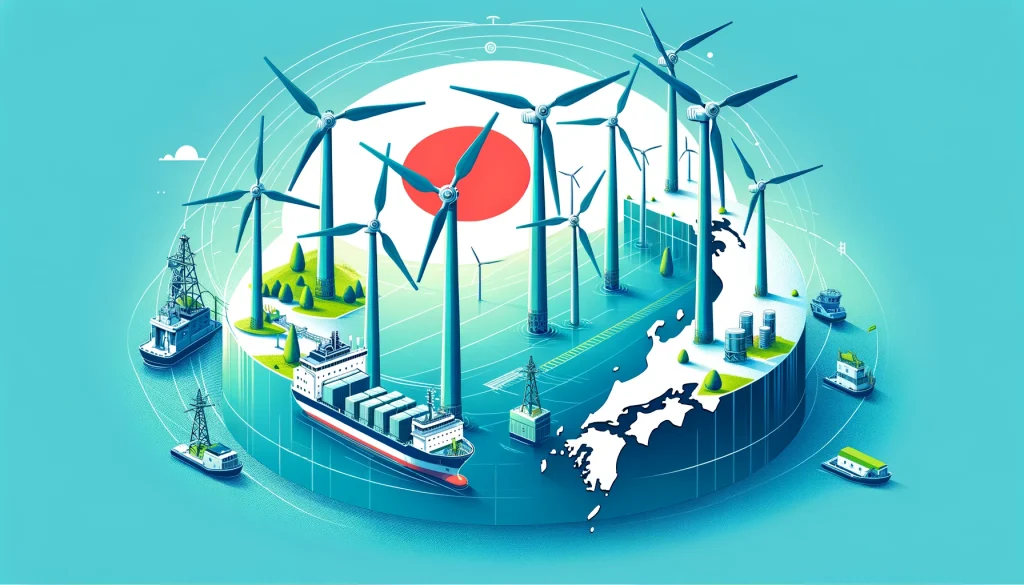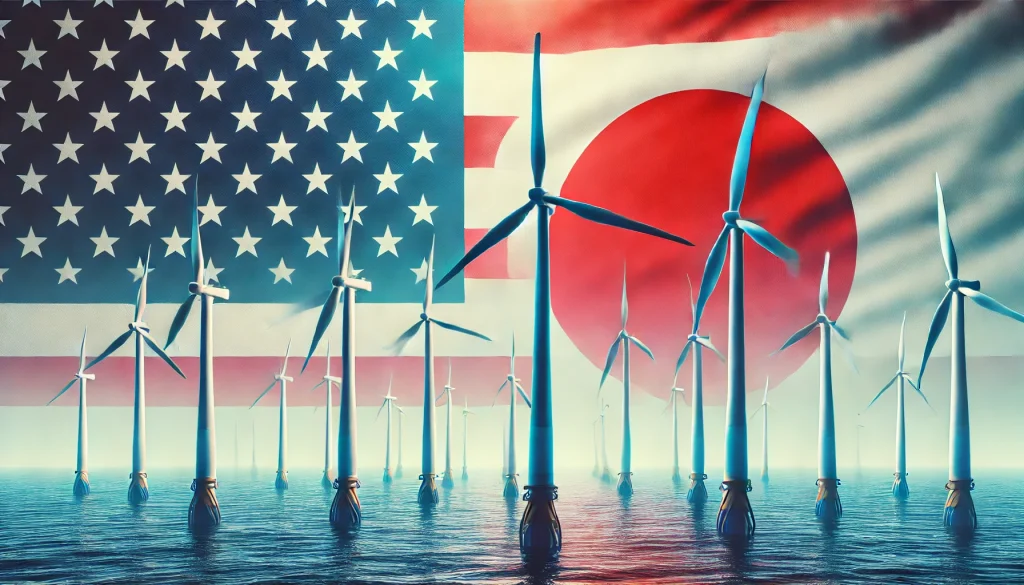Introduction
Japan is striving to scale up its offshore wind capacity to as much as 45 GW by 2040 under a national strategy. While the potential is immense, the industry faces multiple technical, regulatory, and market-related challenges. This article provides a multi-dimensional analysis of Japan’s offshore wind landscape, including global trends, floating wind potential, investment perspectives, and corporate strategies.
1. A Changing Offshore Wind Market and Japan’s Position
Amid shifting geopolitical dynamics and renewed attention to energy security, global interest in offshore wind has surged. Notably, remarks by former U.S. President Trump have sparked discussions about investment shifts to Japan, further raising expectations for the Japanese market.
👉 Related article: Why Trump’s Comments Could Shift Offshore Wind Investment from the U.S. to Japan
2. Supply Chain: Current Status and Challenges
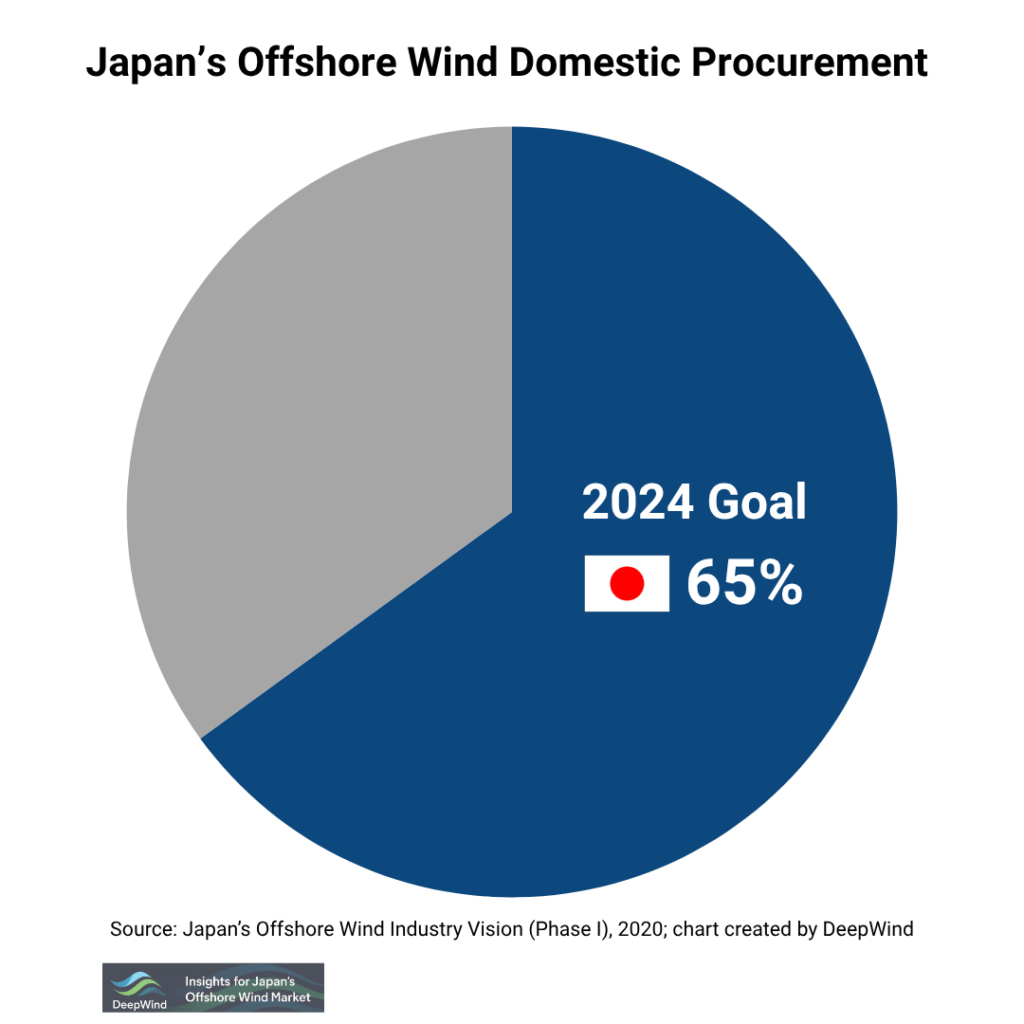
Japan’s offshore wind supply chain remains underdeveloped. With limited manufacturing bases, port infrastructure, and installation vessels, Japan lags behind Europe in cost and capacity. Strengthening local procurement and industrial development is essential. In addition, in the Offshore Wind Industry Vision (Phase II) [Industrial Strategy for Floating Offshore Wind and Related Areas] released on August 8, 2025, the industry set a target to achieve a domestic procurement ratio of over 65% by 2040.
👉 Related article: How Far Has Japan’s Offshore Wind Supply Chain Come?
3. Technology Trends: Unlocking Floating Wind Potential
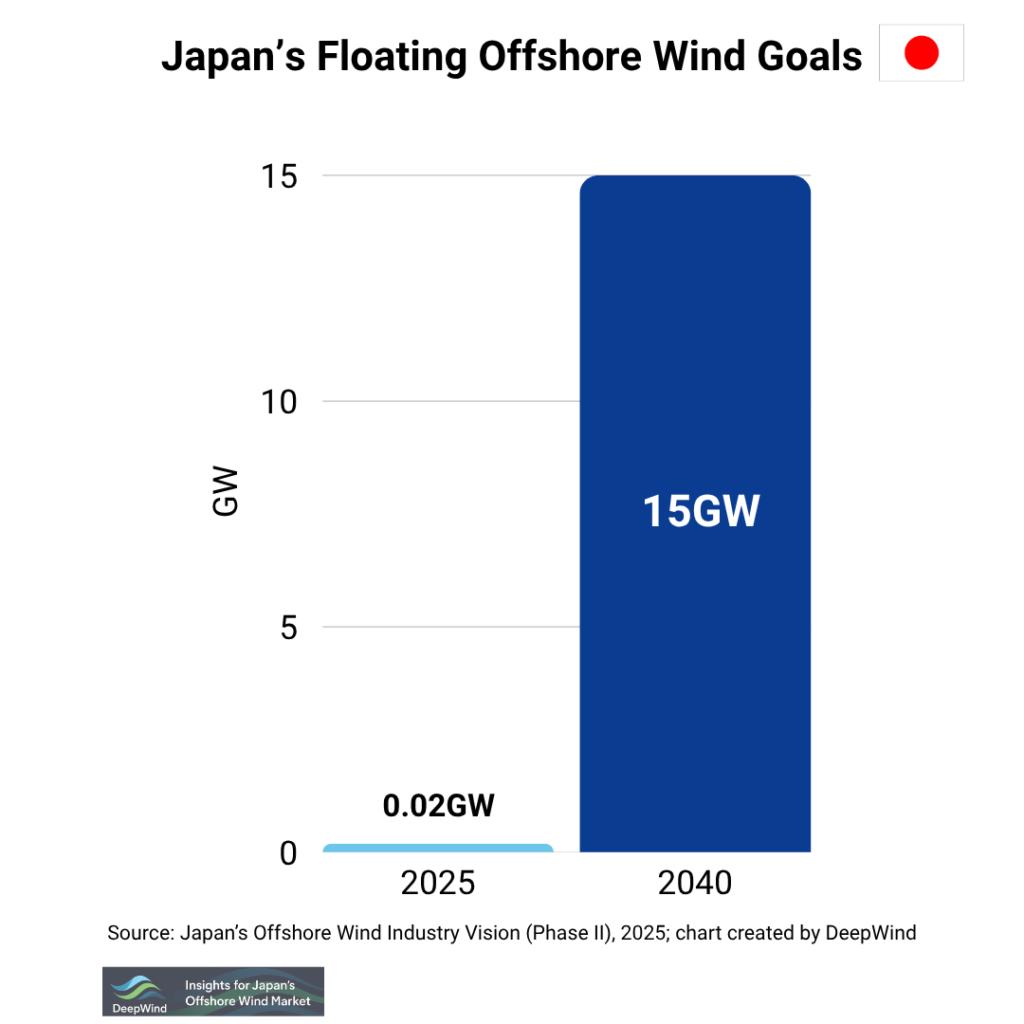
Due to Japan’s limited shallow waters and deep coastal areas exceeding 50m in depth, floating wind technology holds strong promise. International progress—particularly in Europe—is accompanied by pilot and commercial-scale floating projects in Japan. In the Offshore Wind Industry Vision (Phase II) [Industrial Strategy for Floating Offshore Wind and Related Areas] released on August 8, 2025, the government has set a goal of developing more than 15 GW of floating offshore wind power projects by 2040.
👉 Related article: Floating Offshore Wind Power: Global Trends and Development Examples
4. Why Floating Wind is Gaining Attention
Why is floating wind considered Japan’s game-changer? Flexible deployment across deep waters, reduced fishing conflicts, and suitability for Japan’s wave conditions make it a compelling solution. Japan must accelerate adoption and learn from global leaders.
👉 Related article: Floating Offshore Wind: Why Now?
5. Analyzing Risks and Downsides
Despite strong expectations, offshore wind in Japan is challenged by high costs, difficulty in local coordination, disaster risks, and unclear profitability. Realistic discussions are needed to address these obstacles and ensure social acceptance.
👉 Related article: Offshore Wind: Challenges and Drawbacks
| Cost Category | Japan | Europe |
|---|---|---|
| Initial Investment (CAPEX) | High (reliance on imported equipment, complex regulations) | Falling (economies of scale, technology maturity) |
| O&M Costs | High (difficult offshore work) | Decreasing (operational efficiency) |
| Transmission Costs | High (long subsea cables from remote sites) | Relatively low (developed grid infrastructure) |
| Decommissioning Costs | Expensive (immature technology) | Similarly expensive |
Case Study: Mitsubishi’s Offshore Wind Exit
In August 2025, Mitsubishi Corporation withdrew from three offshore wind sites in Akita and Chiba (1.7 GW total). Initially won with ultra-low bids in 2021, the projects collapsed as material costs doubled, the yen weakened, and financing costs surged. Japan’s rigid auction scheme offered no relief.
DeepWind’s LCOE/IRR analysis shows these sites clustered at high LCOE and low IRR, with returns falling below 8% at 18 JPY/kWh — highlighting structural unprofitability from the start.
This case underscores the critical importance of pre-auction profitability assessment for Japan’s offshore wind market.
👉 Related article: Mitsubishi’s Offshore Wind Exit Explained Through Profitability Metrics
6. Importance of Safety Measures and Accident Risks
The wind turbine blade drop incident at Sakata Seaside Park in Akita Prefecture in 2023 was a symbolic event that prompted a re-examination of operational systems, maintenance frameworks, and inspection methodologies. Ensuring safety has become an indispensable element for building long-term trust in the wind industry.
👉 Related article: Lessons from the Akita Accident: Ensuring Safety and Preventing Recurrence
7. Market Appeal and Risks from an Investor’s Viewpoint
Japan’s offshore wind sector appeals to international investors thanks to a stable policy framework and electricity demand. However, cost uncertainty and geopolitical risks remain. This section offers five perspectives on entering the Japanese market.
👉 Related article: 5 Ways Investment into Japan’s Offshore Wind Market
8. Strategic Moves by Japanese Companies
Japanese trading houses, heavy industry players, and utilities are pursuing diverse strategies grounded in technology, finance, and regional alliances. With competition intensifying, collaborations with overseas firms and the rise of new entrants are reshaping the field.
👉 Related article: Strategic Insights: How Japanese Offshore Wind Companies Are Navigating Market Challenges in 2025
Conclusion
Despite its many hurdles, Japan is striving to become a global player in offshore wind by leveraging unique geographic conditions and technological know-how. With focused effort over the next decade, it may well emerge as a leader in Asia’s clean energy transition.
👉 Explore other insights and featured stories in our Market Insights category.
Explore more categories at DeepWind:
- 🔍Market Insights – Understand the latest trends and key topics in Japan’s offshore wind market
- 🏛️Policy & Regulations – Explore Japan’s legal frameworks, auction systems, and designated promotion zones.
- 🌊Projects – Get an overview of offshore wind projects across Japan’s coastal regions.
- 🛠️Technology & Innovation – Discover the latest technologies and innovations shaping Japan’s offshore wind sector.
- 💡Cost Analysis – Dive into Japan-specific LCOE insights and offshore wind cost structures.
